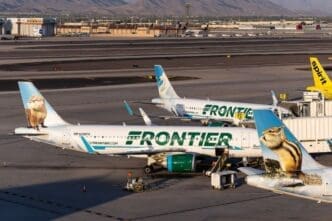The latest bid by Frontier to acquire Spirit Airlines highlights a critical juncture for the low-cost airline industry, which is grappling with rising operational costs and changing consumer preferences.
For years, low-cost airlines thrived by offering budget-friendly, no-frills travel options, attracting price-sensitive travelers. However, the model that relied heavily on ancillary revenue from fees for baggage, seat selection, and onboard purchases is now under strain. The backdrop of rising costs and evolving passenger expectations has made this approach less viable.
Recently, Spirit Airlines turned down yet another acquisition proposal from Frontier Airlines. The rejected offer, valued at $2.16 billion, mirrors a previous attempt made earlier this month, which followed Frontier’s initial unsuccessful bid back in 2022. That first bid, worth $2.9 billion, was outbid by JetBlue’s $3.8 billion offer. The merger with JetBlue was ultimately blocked by the Justice Department due to antitrust concerns, leading Spirit to file for bankruptcy.
Low-cost airlines operate by minimizing expenses, often using secondary airports to reduce landing fees and charging for additional services. However, increased competition from major carriers like United and Delta, alongside soaring costs for labor and maintenance, has put pressure on this model. Notably, Southwest Airlines, which previously championed open seating, ended this practice to boost revenue, while Frontier announced plans to introduce seat upgrades and first-class options.
Industry experts express skepticism about the ongoing viability of the low-cost model. Mike Boyd, an aviation consultant, has remarked that the ultra-low-cost strategy is no longer sustainable due to rising expenses. Investors share this concern; JetBlue’s recent stock decline followed disappointing financial forecasts, with projections overshadowed by higher costs and sluggish revenue growth.
The challenges extend beyond just operational costs. The stock performance of low-cost carriers has faltered compared to their traditional counterparts. Over the past year, United Airlines’ stock surged over 140%, with Delta and American also posting gains. In contrast, low-cost airlines like Frontier and Southwest have seen far less favorable trajectories.
Low-cost operators are attempting to adapt by exploring new markets and service models. However, these efforts have met with mixed results. Frontier, for instance, faces stiff competition from established airlines, limiting its ability to expand effectively. Despite a persistent market for budget travel, experts like Dan Bubb from the UNLV Honors College caution that without substantial financial resources, sustaining such a business model is challenging.
The future of low-cost airlines remains uncertain as they navigate a landscape marked by economic pressures and shifting consumer preferences. While there is a demand for affordable flights, the current economic climate demands significant adaptation and innovation to sustain the low-cost model.







